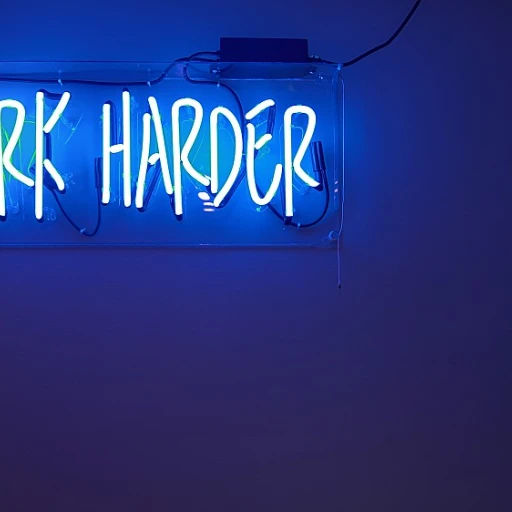
The Core Components of DEIJB
Unpacking the Pillars of DEIJB
DEIJB stands for diversity, equity, inclusion, justice, and belonging. These core components serve as the foundation for building an inclusive environment in workplaces and educational institutions. Each aspect plays a crucial role in creating a sense of belonging and ensuring everyone feels valued and supported.
Diversity: Diversity involves acknowledging and embracing the differences among people. This includes various backgrounds, perspectives, and experiences. A diverse workforce or school environment is crucial for innovation and problem-solving, as it brings a wide range of ideas and viewpoints to the table.
Equity: While diversity focuses on the representation of different groups, equity is about ensuring fair treatment, opportunities, and access for all individuals. This involves implementing policies and practices that address systemic inequalities and remove barriers that might hinder people from reaching their full potential.
Inclusion: Inclusion is about integrating all individuals into the workplace or learning environment so they feel respected and actively participate. Inclusive leadership is necessary for creating policies and an environment where faculty, staff, and students not only feel they belong, but are also heard and valued.
Justice: This component focuses on the pursuit of eliminating systemic bias and achieving fairness. It's about actively working towards an anti-biased and anti-racist environment that promotes equity and justice belonging for all.
Belonging: A sense of belonging is the feeling that individuals are accepted and valued by others, which is crucial in an inclusive environment. When people feel they belong, they are more likely to engage and contribute to the collective success of the organization.
Integrating DEIJB principles is essential for creating an environment where everyone feels valued and differences are celebrated. As organizations move forward with their unwavering commitment to diversity inclusion, they not only foster a healthy work culture but impact their employer branding significantly. For deeper insights into how payroll companies prioritize such initiatives, read understanding their priorities.
The Impact of DEIJB on Employer Branding
Embracing Diversity and Inclusion
In recent years, organizations have been striving to embed diversity and inclusion into their core values. This reflects a commitment to creating an inclusive environment where every employee can feel they belong. An organization's employer branding can be greatly enhanced by showcasing its unwavering commitment to diversity, equity, inclusion, justice, and belonging (DEIJB). By actively highlighting these efforts, you demonstrate a promise to a more equitable workplace, thus positioning the organization as a good fit for diverse talent.
By implementing anti-biased and anti-racist policies and practices, companies not only improve their reputation but also contribute to a more inclusive work environment. The shift to inclusive leadership fosters an atmosphere where employees, from students to faculty staff, feel that their voices are heard and respected. In turn, this creates a sense of belonging and strengthens the organizational ethos.
Impact on Employee Engagement
The impact of DEIJB on employee engagement can't be overstated. Defined by principles of equity inclusion and justice belonging, DEIJB initiatives enhance employees' experiences in the workplace. Workforce training that emphasizes creating inclusive environments ensures that employees understand the importance of diversity equity. It also arms them with tools to engage in inclusive practices, ultimately allowing them to feel connected to their work and supported by their colleagues.
Moving Forward Through Commitment
Organizations need to recognize that promoting DEIJB within their branding requires more than just lip service. It is essential to integrate these values into everyday operations and policies. This execution is crucial for enhancing organizational growth and underscores a company’s commitment diversity. By remaining committed to this cause, organizations ensure their continued relevance and appeal in today's socially aware market.
For a deeper understanding of how enhancing organizational growth through employer branding can be achieved, it's crucial to incorporate these transformative DEIJB principles.
Challenges in Implementing DEIJB
Overcoming Barriers in DEIJB Implementation
Implementing Diversity, Equity, Inclusion, Justice, and Belonging (DEIJB) initiatives in employer branding is not without its challenges. Organizations often face hurdles that can impede the creation of an inclusive environment where all employees feel they belong. Understanding these challenges is crucial for moving forward effectively.
One of the primary obstacles is resistance to change. Many organizations have established cultures and policies that may not easily accommodate new DEIJB practices. This resistance can stem from a lack of understanding or an unwillingness to disrupt the status quo. To address this, companies need to foster an unwavering commitment to diversity and inclusion, ensuring that all staff, from leadership to entry-level employees, are on board with the changes.
Another significant challenge is the integration of DEIJB into existing policies and practices. Organizations must evaluate their current systems to identify areas where bias and exclusion may exist. This involves creating inclusive policies that actively promote equity and justice. Training programs focused on anti-biased and anti-racist practices can help staff and faculty understand the importance of these initiatives and how to implement them effectively.
Additionally, measuring the effectiveness of DEIJB initiatives can be difficult. Without clear metrics, it’s challenging to assess whether the implemented changes are having the desired impact. Organizations need to develop robust evaluation frameworks that consider both quantitative and qualitative data, ensuring that the experiences of all employees, including students and faculty in higher education settings, are taken into account.
Finally, creating a sense of belonging is essential but often overlooked. Employees need to feel that they are a good fit within the organization and that their contributions are valued. This requires a commitment to creating an inclusive environment where diverse voices are heard and respected. By addressing these challenges, organizations can enhance their employer branding and demonstrate their commitment to diversity inclusion.
For organizations seeking to overcome these challenges, contractor management solutions like Transformify are reshaping employer branding by offering tools and strategies to integrate DEIJB seamlessly into their operations. These solutions can help organizations create a more inclusive and equitable workplace, ultimately strengthening their employer brand.
Case Studies: Successful DEIJB Integration
Illustrative Examples of Successful Integration
Examining how various organizations have successfully integrated DEIJB principles into their workplace can offer valuable insights. These case studies underscore the significance of commitment to diversity, equity, inclusion, and justice. Each organization took distinct approaches to foster an environment where employees feel they belong and are valued for their unique contributions. These examples highlight the effectiveness of inclusive leadership and demonstrate how unwavering commitment to DEIJB can transform workplace culture.
The approach often begins with creating an inclusive environment through comprehensive policies and practices. For instance, one organization focused heavily on anti-biased training programs for both faculty staff and students. By actively encouraging open conversations about diversity and equity inclusion, they created a safe space where individuals felt empowered to share their experiences. This open dialogue helped reduce biases and fostered a sense of belonging among staff and students alike.
Another key factor in successful DEIJB integration is aligning policies with the organization's core values. This involves not only anti-racist policies but also practices that support equity and inclusion justice across all levels of the organization. At a particular school, leadership demonstrated an unwavering commitment to these values by ensuring that every staff member received diversity equity and inclusion training. This commitment to staff education has been vital in fostering a more inclusive and supportive environment for all.
Moreover, companies that prioritize diversity inclusion and equity have noticed significant improvements in employee morale and retention. For example, one company sought to enhance the employee experience by actively involving them in the creation of DEIJB initiatives. Through structured inclusion frameworks, faculty staff were encouraged to participate in decision-making processes, further promoting a culture where everyone could feel they belong and contribute to moving forward together.
These organizations have shown that integrating DEIJB isn’t merely about checking boxes but involves embedding these principles into the fabric of the organization. The positive outcomes observed, such as increased employee engagement and diverse talent attraction, emphasize the importance of continuous effort and commitment to creating inclusive and equitable work environments.
Measuring the Effectiveness of DEIJB Initiatives
Assessing the Success of DEIJB Initiatives
Incorporating DEIJB into your employer brand is not just a one-time task. The continuous evaluation of these initiatives is crucial to determine their effectiveness and to ensure a more diverse, equitable, and inclusive work environment. But how can companies assess whether their DEIJB efforts are successful?
Key Metrics and Indicators
To measure the success of DEIJB initiatives, organizations should employ a combination of qualitative and quantitative metrics. These might include:
- Employee Surveys: Regular surveys can gauge how well staff and faculty feel they belong and whether they perceive a genuine commitment to diversity and inclusion. Feedback on employees' experiences can pinpoint areas of improvement.
- Recruitment and Retention Rates: Tracking these rates can help assess whether an organization is attracting a diverse talent pool. It can also indicate if people feel a sense of belonging and are less likely to leave.
- Promotion and Leadership Diversity: Examine whether individuals from diverse backgrounds are advancing to leadership roles. Inclusive leadership can be a significant marker of progress in DEIJB efforts.
- Diversity Training Participation: Track participation rates in diversity, equity, inclusion, and anti bias training programs, aiming for widespread involvement to foster an inclusive environment.
Creating a Culture of Accountability
To ensure the effectiveness of DEIJB initiatives, companies need to establish accountability frameworks. This includes defining clear roles and responsibilities across the organization. Leaders must champion a culture that prioritizes these values, setting the tone that policies and practices will align with DEIJB principles. In higher education, for instance, creating inclusive school environments requires a steadfast commitment from both students and staff members.
Continuous Improvement and Adaptation
DEIJB is an evolving field; what works today might need adjustment tomorrow. Organizations should commit to ongoing learning and adapting their strategies. Engaging with employees and other stakeholders to understand their needs can lead to more robust policies that truly foster equity and inclusion justice. As companies move forward, maintaining an unwavering commitment to these goals ensures long-term success in creating an inclusive work environment that is a good fit for all.













